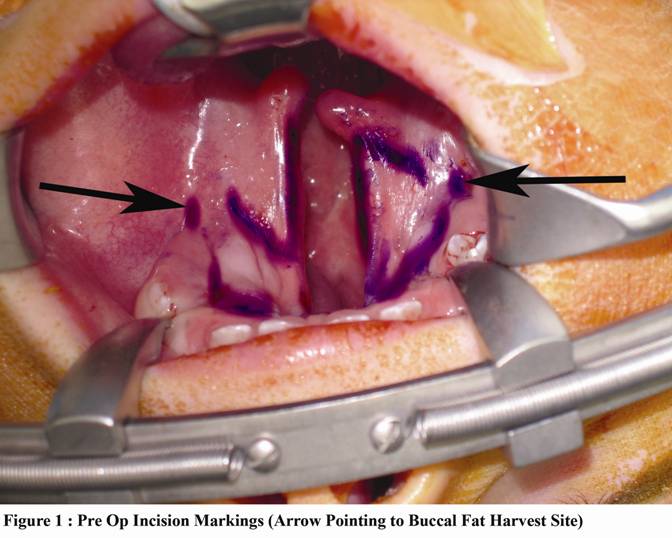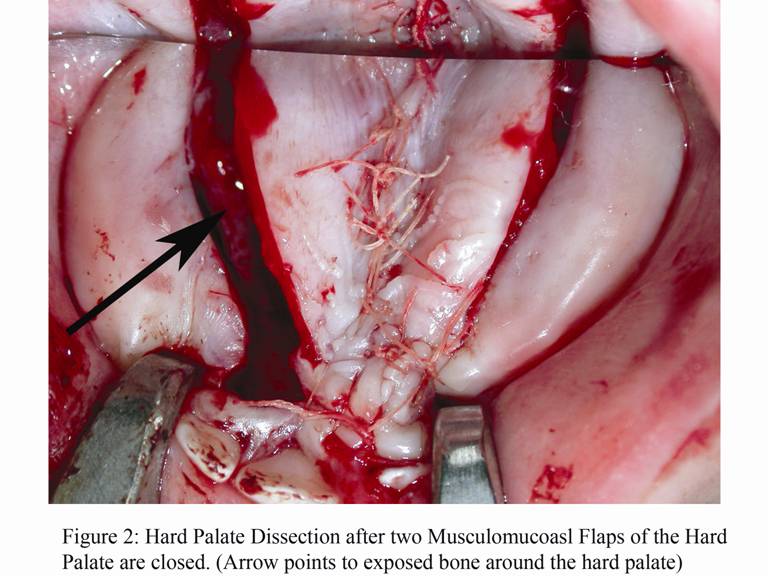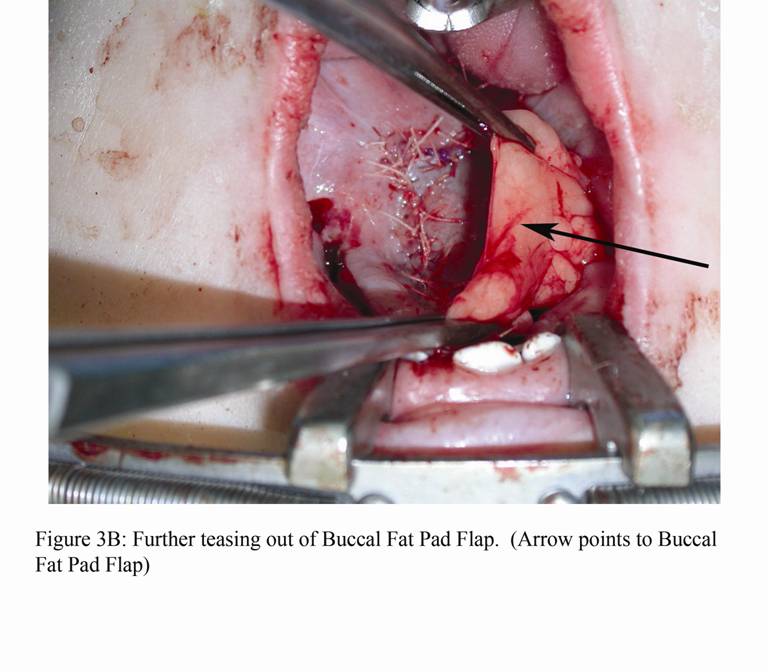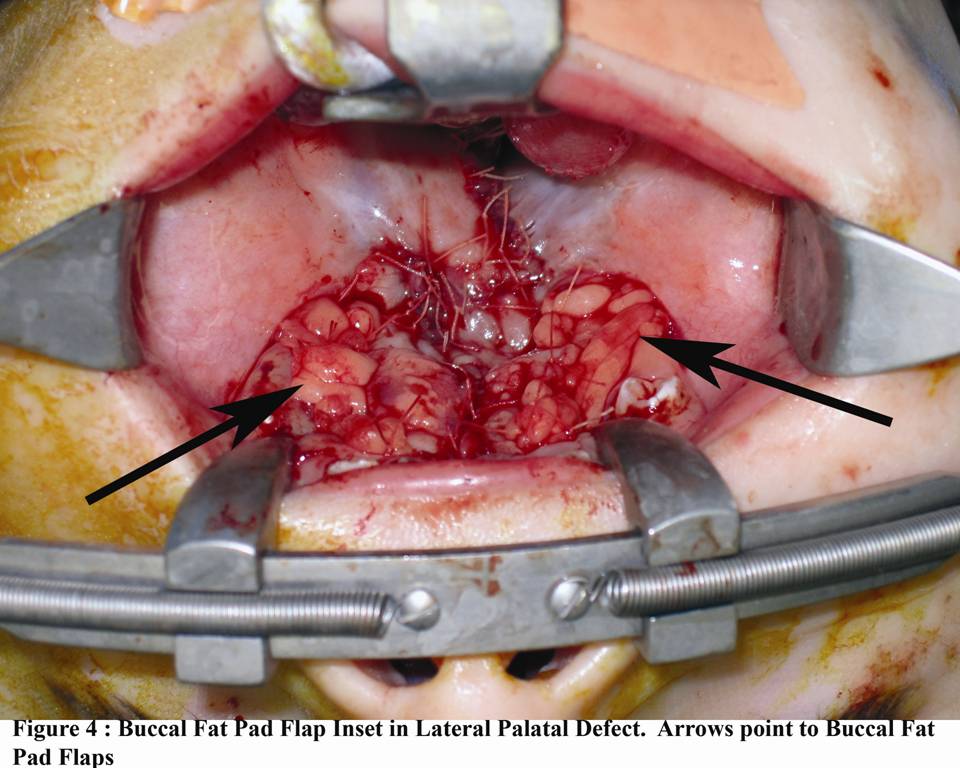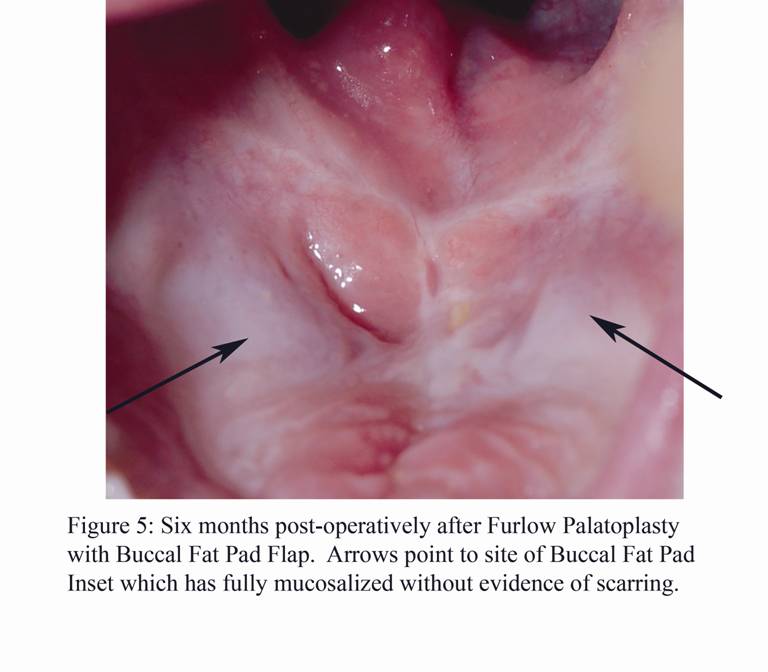Monday, November 3, 2008
14173
Novel Utilization of The Buccal Fat Pad Flap for Congenital Cleft Palate Repair
Abstract: Novel Utilization of The Buccal Fat Pad Flap for Congenital Cleft Palate Repair.
Background: The buccal fat pad (BFP) has been described in reconstructive surgery for over 30 years for intraoral reconstruction after tumoral excision. We describe a new use of the BFP: Furlow repair coupled with pedicled BFP flaps to cover the exposed bone of the hard palate and midline areas of high tension in primary cleft palate repair. We believe our technique has several beneficial attributes: it can be used to cover denuded palatal bone, potentially decreasing scar contraction induced by the lateral tissue defect and thereby deterring subsequent restriction of transverse maxillary growth. Using this technique can also buttress the soft tissue repair at the junction of the hard and soft palate where fistula formation is most common.
Methods: Double reversing Z-plasties for a Furlow palatoplasty and the buccal fat pad flap harvest site are marked out (Figure 1). The double reversing z-plasties are completed and then the midline, two myomucosal flaps of the hard palate are closed often leaving a wide gap of bone all the way around the patient's hard palate (Figure 2). A curved iris scissors is placed in the superior buccal sulcus just lateral to the maxillary tuberosity (Figure 1) and inserted directly through the mucosa and spread resulting in BFP extrusion. The BFP flap is then teased out slowly making sure not to avulse it from its blood supply (Figure 3A and 3B). Once an adequate amount of tissue is harvested, it is advanced into the lateral tissue defect and secured over the underlying exposed bone and midline areas of high tension (Figure 4).
Results: Between April 2007 and December 2007 seven patients underwent primary cleft palate repair using the newly described technique. No patients had complications caused by the BFP at the time of surgery. For all patients, the recipient areas fully epithelialized within 4 weeks of the surgery and appeared to have robust palatal mucosa (Figure 5). No patients developed fistulas in their first month of follow up. One patient had postoperative thrush which resolved with treatment.
Conclusions: This procedure offers a simple and safe way to improve our current method of repair for primary cleft palates. Technically, there is minimal dissection involved in developing the BFP flap and it offers a significant amount of tissue. Recent uses of acellular dermal matrices show decreased fistula rate which is attributed to the increased tissue layer. We prefer our method to uses of allografts in palatal repair because it offers a significant amount of vascularized tissue and avoids the risks of using non-autologous materials. Furthermore, we contend that the BFP flap brings vascularized tissue onto the lateral exposed bone caused by medial transposition of the hard palatal myomucosal flaps, potentially restoring blood supply and assuaging any potential for growth restriction. Finally, we feel that the BFP flap may prove to be a useful tool in the armamentarium of the cleft surgeon to prevent fistula at the hard and soft palatal junction and a better alternative than the use of an acellular dermal matrix (Alloderm). Transverse growth discrepancy and palatal fistulas are huge dilemmas that face plastic surgeons as well as orthodontists, dentists and oral surgeons. We believe that this exciting new technique may help decrease the biomedical burden of the consequences and complications of cleft palate repair.
Table 1: Summary of Cases and follow up Data.
|
Patient #
|
Patient age at time of surgery
|
Cleft (unilateral or bilateral)
|
Fistula?
(Y or N)
|
Mucosalized by day 28? (Y or N)
|
Infection? (Y or N)
|
|
1
|
11months
|
Bilateral
|
N
|
Y
|
N
|
|
2
|
14months
|
Bilateral
|
N
|
Y
|
Y (thrush)
|
|
3
|
15months
|
Unilateral
|
N
|
Y
|
N
|
|
4
|
12months
|
Unilateral
|
N
|
Y
|
N
|
|
5
|
17months
|
Unilateral
|
N
|
Y
|
N
|
|
6
|
21months
|
Bilateral
|
N
|
Y
|
N
|
|
7
|
15months
|
Bilateral
|
N
|
Y
|
N
|
